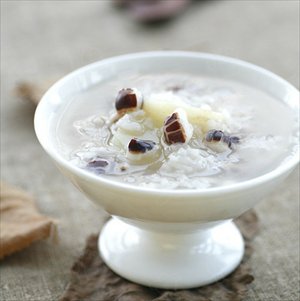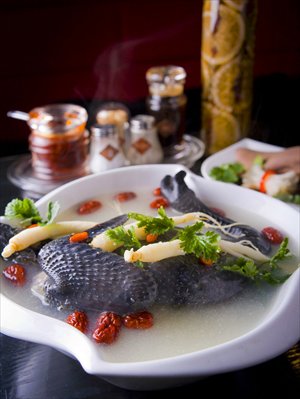Running hot and cold
Editor's note:
The ancient Chinese created an agricultural solar system - still in use today - that is based upon their observation of crops, climate, astrology, and the study of animal and plant life cycles. The system guided farmers as to when to sow seeds and when to harvest them, and this system has now been in place for more than 2,000 years.
Today, with advances in science and technology, agriculture depends less on this ancient wisdom. But this seasonal calendar still operates as a reference guide for gourmands to seek out the best times for seasonal delicacies and for health experts to plan nutritious diets.
In a single year, the system features 24 "solar terms," each lasting one day and occurring every two weeks. Each has its own name and characteristics. The Global Times is presenting a weekly series examining which foods and delicacies are best enjoyed during these periods, as well as tips on preserving general health.
As the sixth solar period of the year and also the last in spring, guyu started on April 20, and we finally wave goodbye to the chilly weather and officially, at least, march on to summer. However, the temperatures are still unpredictable, making it difficult for people to decide exactly what to wear before they leave the house every morning. According to the precepts of traditional Chinese medicine (TCM), people still need to wrap up well in the morning and at night during this period.
Against humidity
Guyu, literally translated as "grain rains," indicates that rains are often seen during this time. Agriculturally, rain benefits the growing of crops, but it also brings humidity and moisture. According to TCM, the human body changes as the outside environment changes, so that the body suffers more "dampness" as the humidity increases.
This dampness can lead to poor appetite, neuralgia and joint pains. And to counter these ailments, people are advised to eat more Chinese yams, radishes, lotus roots, seaweed, bamboo shoots, bean sprouts and crucian carp, or jiyu in Chinese.
Meanwhile, those who suffer from neuralgia or rheumatic arthritis should stay away from acidic and spicy foods, including lamb, chillies and peppers. These foods are said to accelerate the accumulation of heat in the body and to make it more difficult to eliminate dampness and other toxins.
Exercise is another efficient way to get rid of this dampness. Joggling and aerobics are highly recommended because they help to increase the blood circulation and to warm up the body. However intensive exercise, such as hiking and swimming, are not advisable for people who are suffering from sciatica. Tai chi, fishing and walking are the best choices for them.
Protect the spleen and stomach
Piwei, literally meaning spleen and stomach, refers to the digestive system of the human body in TCM. Guyu is regarded as the prime time to nourish one's digestive system with certain tonics that are especially good for the spleen and stomach. However, the climbing temperatures in April make foods with high levels of protein less appetizing. During guyu, sufficient vitamin intake is a must and you can achieve this by increasing your consumption of vegetables and fruit.
TCM doctors suggest that people with spleen problems should take herbs including Chinese angelica, wolfberries and tuckahoe. For those who are not keen on Chinese herbs, here are two alternative recipe suggestions that can also benefit the spleen.

Congee of Chinese yams, pearl barley and gorgon fruit
Ingredients: 200 grams rice, 200 grams Chinese yam, 200 grams pearl barley, 200 grams gorgon fruit
Soak the gorgon fruit in water for 12 hours
Soak the pearl barley and rice for one hour
Peel the Chinese yam and chop it into small pieces
Put all the ingredients together in water and boil them in an electronic rice cooker for 20 minutes

Black bone chicken soup
Ingredients: 50 grams of astragalus membranaceus (huangqi), 25 grams of fructus amomi (sharen) and half a black bone chicken (about 600 grams)
Wash the chicken and chop into small pieces
Wash the herbs thoroughly
Put all the ingredients together with enough water to cover them, boil, and simmer gently for two hours
Add ginger, rice wine and salt to serve